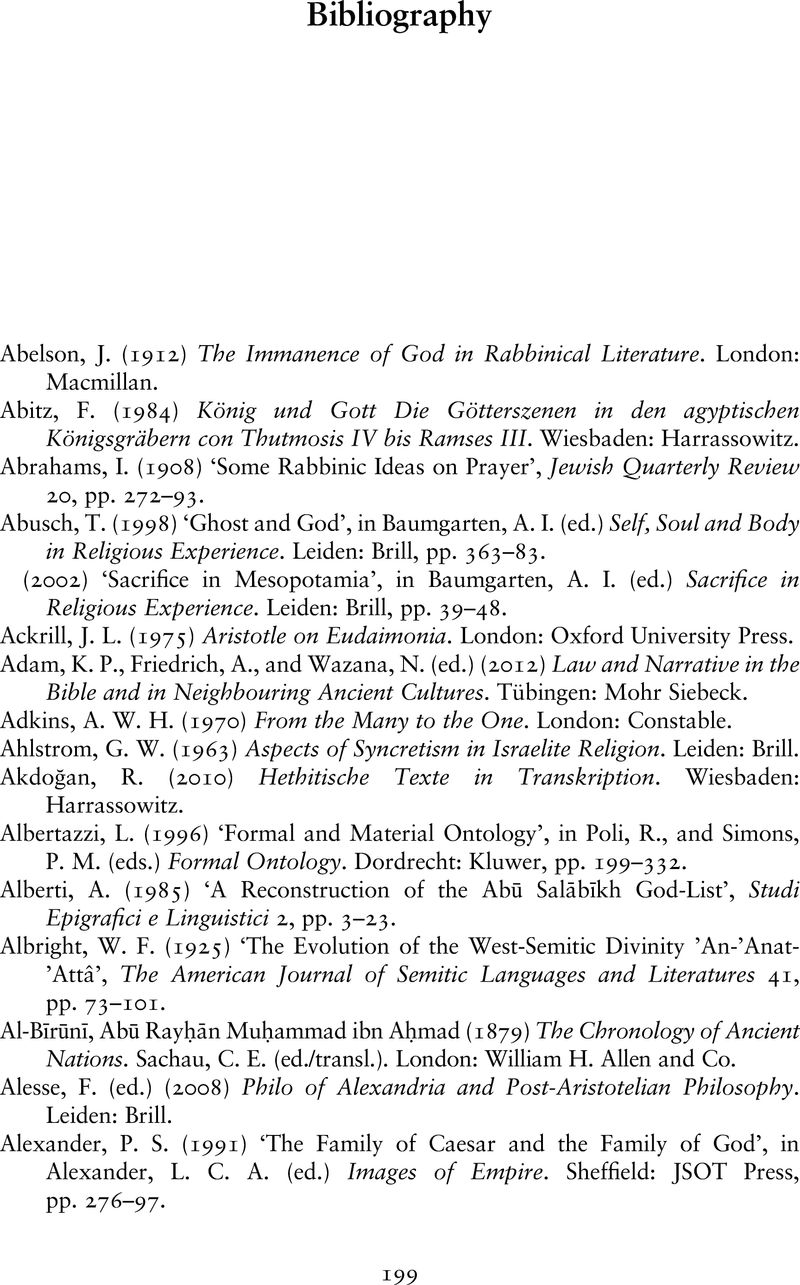Book contents
- Gods and Humans in the Ancient Near East
- Gods and Humans in the Ancient Near East
- Copyright page
- Dedication
- Contents
- Preface
- Acknowledgements
- Abbreviations
- 1 Introduction
- 2 Godlike Bodies and Radiant Souls
- 3 Composite Beings and Sexy God-Kings
- 4 Metallic Bodies and Deification by Ingestion
- 5 YHWH and His Theomorphic Body
- 6 Divinity for All
- 7 Conclusion
- Bibliography
- Index
- References
Bibliography
Published online by Cambridge University Press: 28 October 2020
- Gods and Humans in the Ancient Near East
- Gods and Humans in the Ancient Near East
- Copyright page
- Dedication
- Contents
- Preface
- Acknowledgements
- Abbreviations
- 1 Introduction
- 2 Godlike Bodies and Radiant Souls
- 3 Composite Beings and Sexy God-Kings
- 4 Metallic Bodies and Deification by Ingestion
- 5 YHWH and His Theomorphic Body
- 6 Divinity for All
- 7 Conclusion
- Bibliography
- Index
- References
Summary

- Type
- Chapter
- Information
- Gods and Humans in the Ancient Near East , pp. 199 - 242Publisher: Cambridge University PressPrint publication year: 2020

